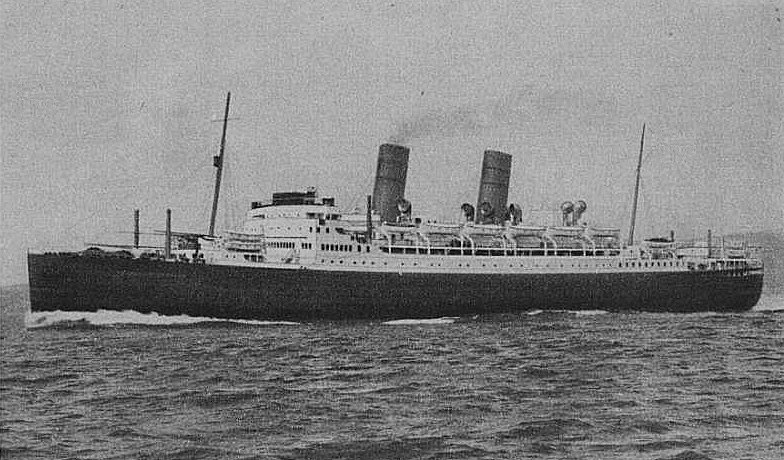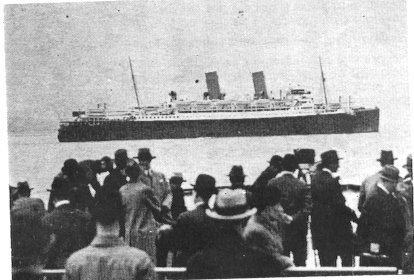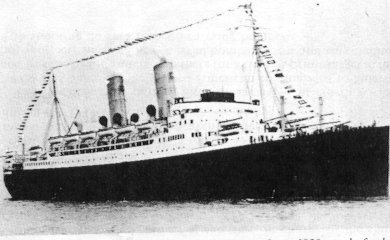

The Duchess of Bedford was built by John Brown & Co Ltd, Glasgow in 1928 for Canadian Pacific SS Ltd. She was a 20,123 gross ton ship, length 601ft x beam 75.2ft, two funnels, two masts, twin screw and a speed of 18 knots. There was passenger accommodation for 580-cabin, 480-tourist and 510-3rd class. Launched on January 24, 1928 by Mrs. Stanley Baldwin, the wife of the British prime minister, she sailed from Liverpool on her maiden voyage to Quebec and Montreal on June 1, 1928.


On her second westbound crossing, she set a new record of six days, nine and a half hours from Liverpool to Montreal. On May 8, 1933, she was rumoured sunk after striking an iceberg off Newfoundland. The cause of this story was thought to have been the result of a misunderstanding of a messsage picked up by an unidentified wireless operator. News of the "disaster" swept through the country, and the stress of relatives of those on board was not alleviated until 2 a.m. the following day, when the Duchess radioed from mid-ocean that all was well. On her July 13, 1933 voyage she actually collided with an iceberg in the foggy straits of Belle Isle, Newfoundland, but but sustained only slight damage.
Five days before the declaration of war in 1939, she was chartered for a trooping voyage to Bombay, and on January 5, 1940 resumed Liverpool - St John NB - Halifax voyages, being used on the Eastbound crossings to ferry Canadian troops to Britain. In August 1940 she commenced the first of three voyages to Suez via Freetown and Cape Town. In November 1941 she left Liverpool on a 5 month voyage which took her to Singapore with 4000 Indian troops and 40 nurses. Arriving at the end of January 1942, she embarked 875 women and children for evacuation to Batavia, Java. Although attacked on several occasions, she was not seriously damaged, and arrived at Liverpool on April 2, 1942. After two trips to Cape Town, she sailed from Liverpool for Boston on August 7, 1942 and on August 9, sighted a U-Boat and sank her by gunfire (with a 6" gun made almost 30 years before). She possibly damaged another U-Boat too. She was later used in the North African landings and shot down an enemy aircraft in November 1943. She was also used in the Sicily and Salerno landings and various trooping voyages, and prisoner of war repatriations. As a troopship, she carried 179,000 servicemen and women and civilians, almost all over the world, and covered more than 400,000 miles.
On March 3, 1947 she arrived at Glasgow to be refitted to
carry 400-1st and 300-tourist class passengers, her speed increased to
20 knots, and was renamed Empress of France in October 1947.
She resumed Liverpool - Quebec - Montreal sailings on September 1, 1948
and in 1958 was fitted with new streamlined funnels and her accommodation
altered to carry 218-1st and 482-tourist class passengers. She started her
last Montreal - Liverpool crossing on November 30, 1960 having made 310
round voyages on the North Atlantic, and on December 19, 1960 sailed from
Liverpool for Newport, Monmouthshire where she was scrapped.
[North Atlantic Seaway by N.R.P. Bonsor, Vol. 3,
p. 1317-18]
[Canadian Pacific - 100 Years by George Musk]